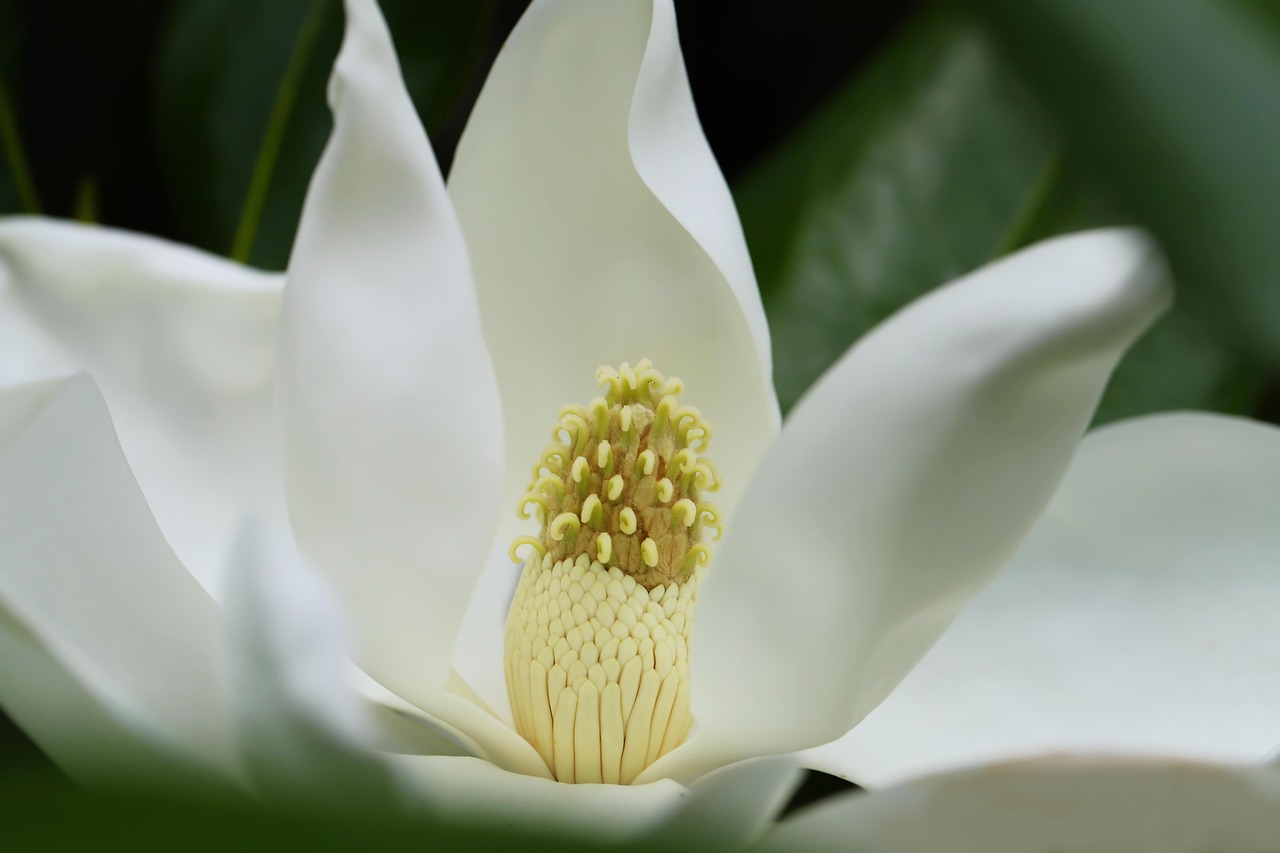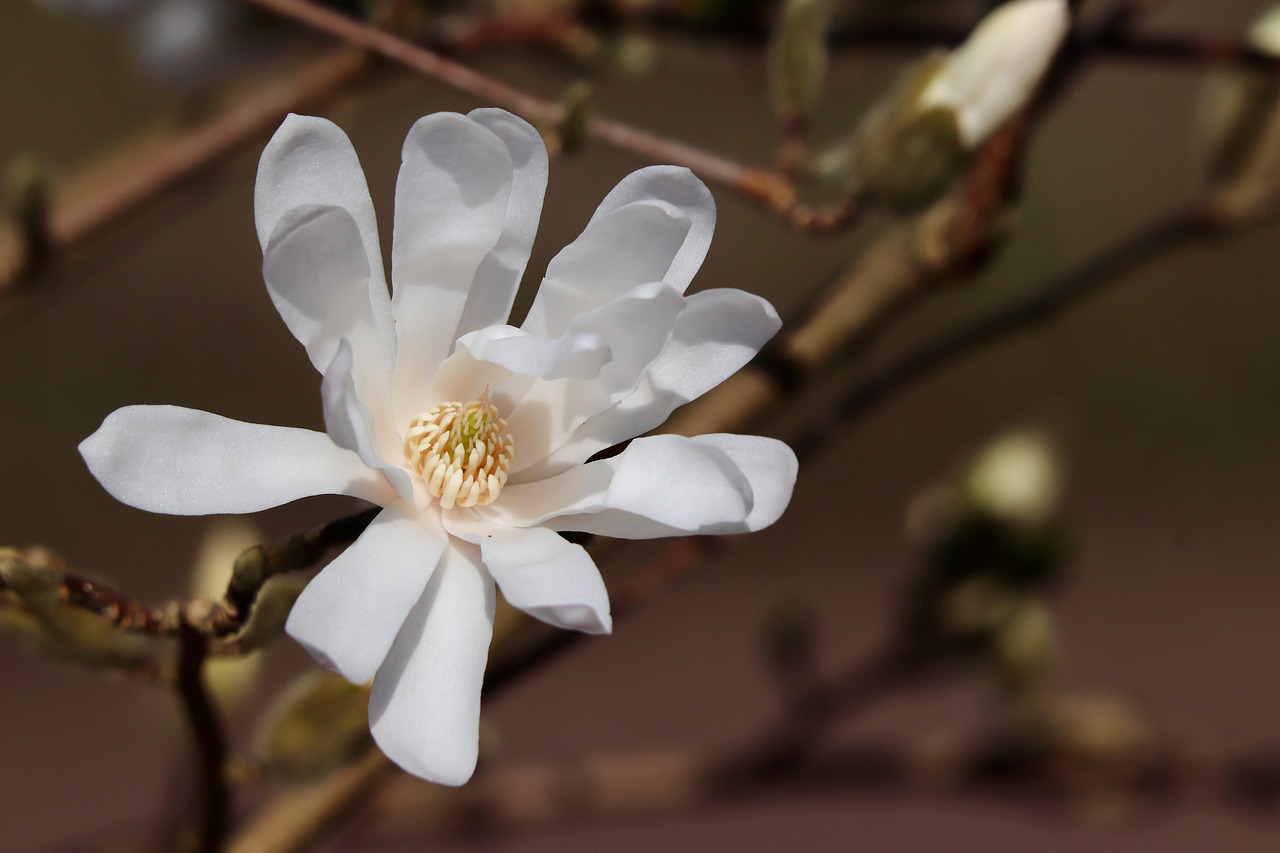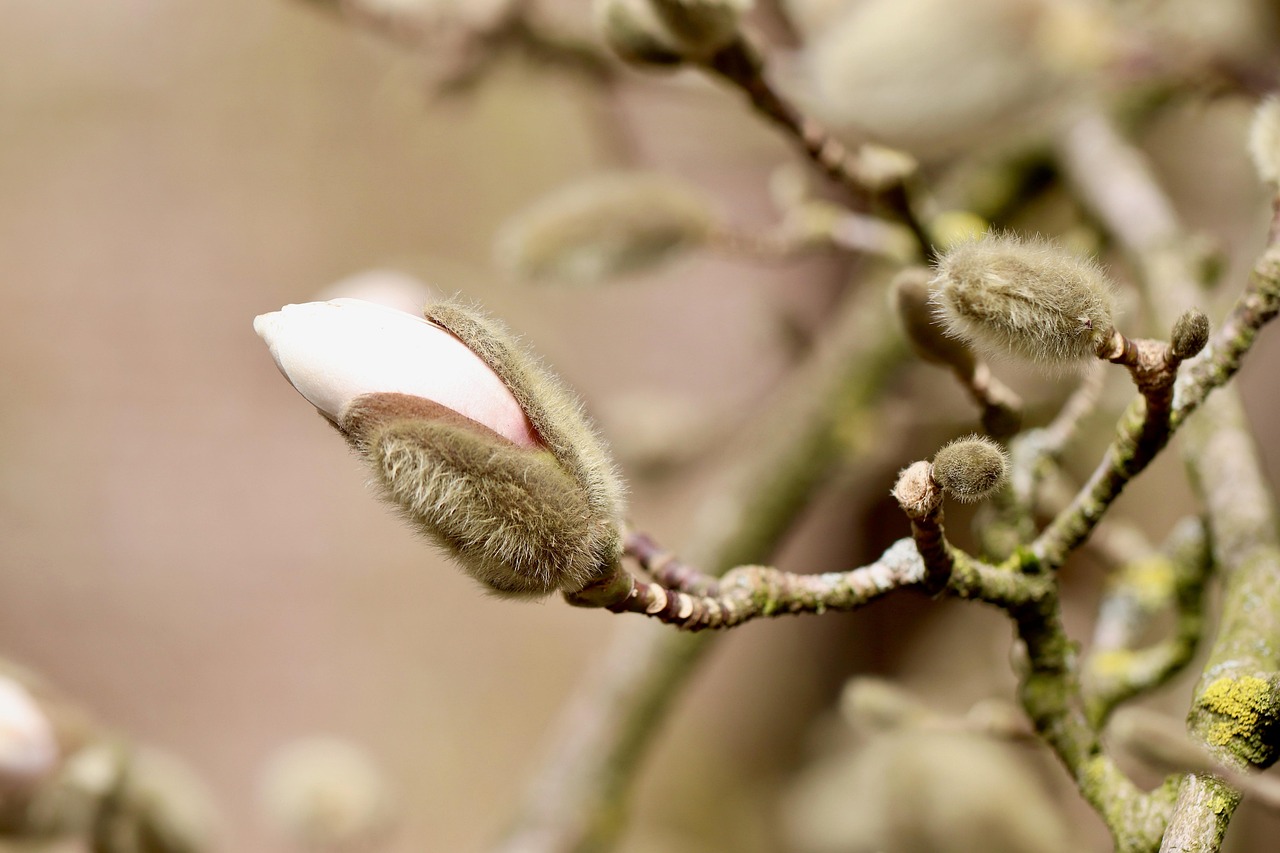Yes, magnolia trees should be trimmed, but it requires care and timing. Proper maintenance promotes healthy growth, improves shape, and enhances flowering. Regular trimming helps remove dead or diseased branches, ensuring the tree remains robust and visually appealing.
Magnolia trees are cherished for their stunning flowers and rich, glossy leaves. Native to North America and parts of Asia, these trees can grow quite large and add significant beauty to any landscape. However, like all trees, they require maintenance to thrive. Trimming is an essential part of caring for magnolias. It not only enhances the tree’s aesthetics but also contributes to its overall health.
The best time to trim a magnolia tree varies depending on its specific species. Some magnolia varieties bloom in early spring, while others may bloom later in the season. Understanding the blooming cycle is crucial for effective trimming. Trimming too early in spring can remove flower buds, leading to fewer blooms. On the other hand, trimming too late may hinder growth and overall health.
Understanding Magnolia Tree Growth

Magnolia trees can grow rapidly, reaching heights of 20 to 80 feet, depending on the species. Their broad canopy can spread just as wide, providing ample shade and visual interest in a garden or yard. Here are some key growth characteristics of magnolia trees:
| Characteristic | Details |
|---|---|
| Height | 20 to 80 feet |
| Spread | 15 to 40 feet |
| Growth Rate | Moderate to fast |
| Lifespan | 50 to 120 years |
With this impressive growth comes the responsibility of maintaining the tree’s structure and health through proper trimming practices. Regular trimming helps manage the size of the tree, making it suitable for smaller yards or urban areas where space may be limited.
In addition to promoting a desirable shape, trimming helps improve air circulation within the tree’s canopy. This is particularly important to prevent diseases caused by stagnant moisture. By removing excess branches and crowded areas, you allow sunlight to penetrate through the foliage, which is vital for the tree’s health.
When to Trim Magnolia Trees
The timing of trimming magnolia trees is critical for blooming and overall health. Generally, the best time to prune is in late summer or early fall after flowering has finished. This timing allows the tree to recover before winter sets in. However, if you need to remove dead or diseased branches, it is acceptable to do so at any time during the year.
For trees that bloom in early spring, wait until after they have flowered before trimming. This ensures that you do not cut off any flower buds that have formed for the upcoming season. Conversely, for varieties that bloom later in the year, you can trim them earlier in the spring.
Understanding the specific type of magnolia tree you have will guide you in determining the best time for trimming. Researching your species or consulting with a local arborist can provide valuable insights.
Best Practices for Trimming Magnolia Trees
To maintain healthy magnolia trees, follow these best practices when trimming:
- Use Sharp Tools: Always use clean and sharp pruning shears or saws. This minimizes damage and helps prevent disease spread.
- Avoid Heavy Pruning: Avoid cutting more than one-third of the tree’s foliage at a time. Over-pruning can shock the tree.
- Remove Dead or Diseased Wood: Focus on cutting away any dead or diseased branches to promote overall health.
- Shape Carefully: Aim to maintain a natural shape. Avoid creating flat tops or unnatural angles.
- Monitor for Pests: After trimming, check for signs of pest infestations or diseases that may affect your magnolia.
By adhering to these practices, you can ensure your magnolia trees remain healthy and beautiful for many years to come. Proper trimming not only enhances their appearance but also supports their growth and resistance to diseases.
Common Magnolia Tree Species and Their Pruning Needs
Understanding the specific species of magnolia you have is essential for effective maintenance and pruning. Different species have unique characteristics and requirements. Here are some common magnolia species and their specific pruning needs:
- Southern Magnolia (Magnolia grandiflora): This is a large evergreen tree known for its fragrant, white flowers. Pruning should be done in late summer after flowering to avoid removing flower buds.
- Star Magnolia (Magnolia stellata): This smaller tree produces star-shaped flowers in early spring. Prune immediately after blooming to maintain shape and encourage healthy growth.
- Saucer Magnolia (Magnolia x soulangiana): Known for its large, colorful flowers, this hybrid requires trimming right after it blooms. This helps preserve the flower buds for the following season.
- Cucumber Tree (Magnolia acuminata): This species can grow quite tall and benefits from light pruning to remove dead branches and maintain shape. Trim in late summer.
- Jane Magnolia (Magnolia x jane): A hybrid that blooms in late winter to early spring, it should be pruned immediately after flowering to support new growth.
Being aware of these differences will help you tailor your pruning approach to meet the specific needs of your magnolia tree species.
Signs Your Magnolia Tree Needs Pruning
Recognizing when your magnolia tree needs pruning is crucial for its health and appearance. Here are some signs that indicate it may be time to trim:
- Dead or Diseased Branches: Look for branches that are brown, brittle, or have no leaves. These should be removed to prevent disease from spreading.
- Crowded Branches: If branches are crossing or growing too closely together, trimming will improve air circulation and light penetration.
- Pest Infestation: If you notice signs of pests or fungal infections, timely pruning can help in managing these issues.
- Unusual Growth Patterns: If your tree is growing unevenly or leaning, consider pruning to restore balance and shape.
- Excessive Height: If your magnolia tree has grown too tall for its environment, trimming can help manage its height.
Regularly inspecting your magnolia tree will allow you to address these issues promptly and maintain its health.
The Pruning Process: Step-by-Step Guide
Pruning can seem daunting, but following a systematic process can make it easier. Here’s a step-by-step guide to effectively prune your magnolia tree:
- Gather Your Tools: Ensure you have sharp pruning shears, loppers, and a saw if necessary. Clean the tools with rubbing alcohol to prevent disease transmission.
- Assess the Tree: Take a moment to examine your magnolia tree. Look for dead, diseased, or crowded branches that need attention.
- Start with Dead Wood: Cut away any dead or diseased branches first. Make clean cuts at the branch collar where the branch meets the trunk.
- Thin Out Crowded Areas: Identify areas where branches are crossing or overcrowding one another. Remove select branches to improve air circulation and light exposure.
- Shape the Tree: After addressing dead wood and crowding, step back and look at the overall shape. Trim selectively to maintain a natural appearance.
- Clean Up: After pruning, gather all cut branches and dispose of them properly to prevent any pest or disease issues.
This methodical approach will help ensure that your magnolia tree remains healthy while also maintaining its beauty.
Aftercare Following Pruning
The care given to a magnolia tree after pruning is just as important as the pruning itself. Here are some essential aftercare tips:
- Watering: Ensure your tree receives adequate water after pruning, especially if it was pruned during a dry season. Deep watering will help support new growth.
- Mulching: Apply mulch around the base of the tree. This helps retain moisture and suppress weeds while providing nutrients as it breaks down.
- Pest Monitoring: Keep an eye out for any signs of pests or diseases following pruning. Early intervention can prevent more significant issues.
- Nutrient Support: Consider applying a balanced fertilizer in early spring after pruning to support new growth.
By providing thoughtful aftercare, you can promote healthy regeneration and ensure your magnolia tree thrives in the upcoming seasons.
Common Mistakes to Avoid When Pruning Magnolia Trees

>Avoiding common pitfalls can make a big difference in how well your magnolia trees respond to pruning. Here are some mistakes to watch out for:
- Pruning at the Wrong Time: Timing is crucial; avoid pruning just before the bloom season for flowering varieties.
- Over-Pruning: Removing too much foliage can shock the tree, leading to poor health and stunted growth.
- Poor Cuts: Make sure cuts are clean and at the appropriate angle to promote healing.
- Ignoring Tree Health: Failing to check for diseases or pests before pruning can lead to exacerbating existing problems.
- Lack of Research: Not knowing your specific magnolia species can result in improper care and maintenance.
Avoiding these mistakes will help ensure that your magnolia trees remain healthy and vibrant for years to come, providing beauty and shade in your landscape.
Tools Required for Pruning Magnolia Trees

>Having the right tools is essential for effective and safe pruning of magnolia trees. Using appropriate tools not only makes the job easier but also ensures that cuts are clean and precise, which helps in the recovery of the tree. Below are the key tools you will need:
- Pruning Shears: Ideal for cutting small branches and stems. Look for a bypass type for clean cuts.
- Loppers: These are used for thicker branches that are too large for pruning shears. They provide more leverage and reach.
- Pruning Saw: A hand saw or a pole saw is necessary for larger branches that cannot be cut with shears or loppers.
- Gloves: Protect your hands while working, especially when handling sharp tools or thorny branches.
- Safety Glasses: Prevent debris from getting into your eyes while cutting branches.
- Disinfectant: Cleaning your tools before and after use helps prevent the spread of disease between plants.
Using these tools correctly will ensure that you achieve the best results when pruning your magnolia trees.
Understanding Tree Anatomy for Effective Pruning
To prune effectively, it is crucial to understand the basic anatomy of a tree. Knowing how various parts of the tree function will help you make informed decisions during pruning. Here are the key components:
- Branches: These are the limbs that extend from the trunk. Healthy branches are essential for photosynthesis and overall tree health.
- Leaves: The foliage is where photosynthesis occurs. It’s important to maintain enough foliage to support the tree’s energy needs.
- Trunk: The main stem that supports the branches and leaves. Avoid cutting into the trunk as it can severely damage the tree.
- Branch Collar: This is the area where a branch meets the trunk. Making cuts just outside this collar promotes healing and reduces the risk of disease.
Understanding these components allows you to make informed cuts that will not stress the tree unnecessarily.
Seasonal Care: What to Do Before and After Pruning
Proper seasonal care is essential for magnolia trees, particularly before and after pruning. Each season presents unique opportunities and challenges for tree maintenance. Here’s a guide to caring for magnolia trees throughout the year:
Spring
In spring, magnolias begin to bloom, and this is a critical time for care:
- Inspect for Pests: Check for pests like aphids or scale insects that may affect new growth.
- Watering: Ensure adequate moisture as trees begin to actively grow.
Summer
Summer is an ideal time for pruning many species of magnolias:
- Pruning Time: Trim dead or diseased wood during this season to encourage healthy growth.
- Mulching: Apply organic mulch around the base to retain moisture and suppress weeds.
Fall
As fall approaches, prepare your tree for winter:
- Final Pruning: Complete any final pruning before winter dormancy set in.
- Fertilization: Consider applying a slow-release fertilizer to support root health during winter.
winter
Winter is a time of dormancy for magnolia trees:
- Avoid Pruning: Refrain from pruning during dormancy unless necessary due to dead or broken branches.
- Protection from Snow and Ice: If heavy snow or ice is expected, gently shake off snow from branches to prevent breakage.
This seasonal care plan will help ensure your magnolia trees remain healthy and resilient throughout the year.
The Role of Fertilization in Magnolia Tree Health
Fertilization plays a significant role in maintaining the health of magnolia trees. Providing the right nutrients helps support strong growth, vibrant blooms, and overall vitality. Here’s what you need to know about fertilizing magnolias:
- Nutrient Needs: Magnolias benefit from balanced fertilizers that contain nitrogen, phosphorus, and potassium (NPK). A ratio of 10-10-10 or 15-15-15 is recommended.
- Timing: The best time to fertilize is in early spring as new growth begins. This gives your tree the nutrients it needs during the active growing season.
- Application Method: Spread fertilizer evenly under the canopy, avoiding direct contact with the trunk. Water thoroughly afterward to help nutrients penetrate the soil.
- Avoid Over-Fertilization: Too much fertilizer can lead to excessive growth, making trees more susceptible to pests and diseases.
Caring for your magnolia tree through proper fertilization ensures it thrives in your landscape, providing beauty and shade for years to come.
Potential Pests and Diseases Affecting Magnolia Trees
Magnoli

a trees, while robust, can be susceptible to various pests and diseases. Being aware of these threats is crucial for maintaining the health of your tree. Here are some common pests and diseases that can affect magnolias:
Pests
- Aphids: These small insects suck the sap from leaves and can lead to yellowing or curling foliage. Regular inspection and insecticidal soap treatments can help control their population.
- Scale Insects: Scale can appear as small, brown bumps on branches and stems. They feed on sap and can weaken the tree. Horticultural oils are effective treatments.
- Spider Mites: These tiny pests thrive in dry conditions and can cause stippling on leaves. Increasing humidity around the tree and using miticides can help manage them.
- Leaf Miners: These larvae burrow into leaves, creating visible trails. While they rarely cause serious harm, removing affected leaves can minimize their impact.
Diseases
- Powdery Mildew: This fungal infection appears as a white powdery coating on leaves. Improving air circulation and applying fungicides can help control the spread.
- Canker Diseases: Fungal cankers can cause dieback in branches. Pruning out infected areas and ensuring proper sanitation during pruning can prevent their spread.
- Root Rot: Overwatering or poor drainage can lead to root rot, which causes wilting and yellowing leaves. Ensuring well-draining soil is essential to prevent this issue.
Regular monitoring for these pests and diseases will help you maintain the health of your magnolia trees. Early intervention is key to effective control.
Environmental Considerations for Magnolia Trees
Magnolia trees thrive in specific environmental conditions. Understanding these factors will help you provide the best care for your trees:
- Soil Requirements: Magnolias prefer well-drained, rich, slightly acidic soil. Conduct a soil test to determine pH levels and amend the soil as necessary.
- Sunlight Needs: Most magnolia species thrive in full sun to partial shade. Ensure your tree receives at least six hours of sunlight daily for optimal growth.
- Watering Practices: While magnolias are relatively drought-tolerant once established, they benefit from regular watering during dry spells. Deep watering encourages strong root growth.
- Climate Zones: Different species of magnolia are suited to various climate zones. Researching the specific hardiness zone for your variety will guide you in providing the best conditions.
By understanding these environmental needs, you can create an optimal setting for your magnolia tree to flourish.
Landscaping Ideas with Magnolia Trees
Magnolia trees serve not only as stunning focal points in gardens but also as versatile landscape elements. Here are some landscaping ideas to incorporate magnolias effectively:
- Specimen Planting: Use magnolia trees as standout specimen plants in your yard. Their large flowers and impressive size make them ideal for focal points.
- Mixed Borders: Combine magnolias with other flowering shrubs and perennials for a vibrant border that provides color throughout the seasons.
- Shade Trees: In larger landscapes, plant magnolias strategically to provide shade areas beneath their broad canopies, perfect for outdoor seating areas.
- Privacy Screens: Use magnolias as part of a privacy screen or hedge. Their dense foliage helps create secluded garden spaces.
The versatility of magnolia trees in landscaping makes them an excellent choice for enhancing the beauty of any property.
Conclusion
Caring for magnolia trees involves understanding their unique needs, including proper pruning, seasonal care, pest management, and environmental requirements. Following best practices will promote healthy growth and beautiful blooms in your magnolia trees. Remember to tailor your approach based on the specific species you have, as each type has its own characteristics and care requirements.
By implementing the techniques discussed in this article, you can ensure that your magnolia trees not only thrive but also add stunning beauty to your landscape for years to come. With regular maintenance and attention, these majestic trees will continue to delight with their spectacular flowers and lush foliage.
